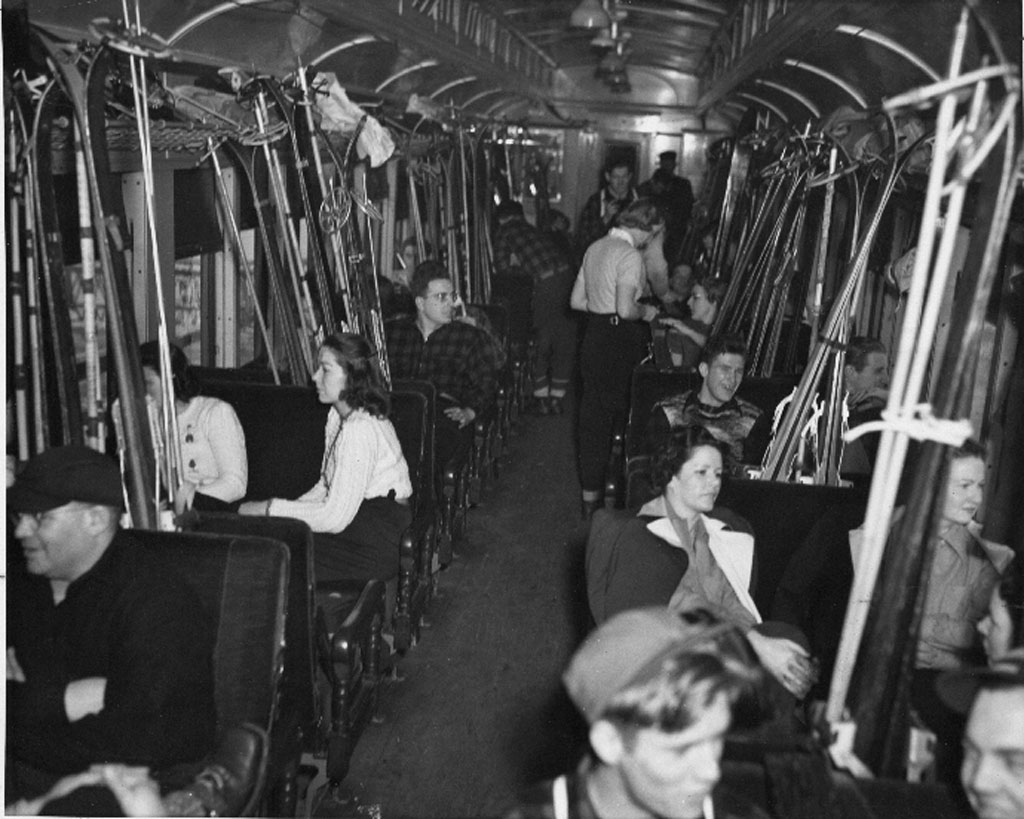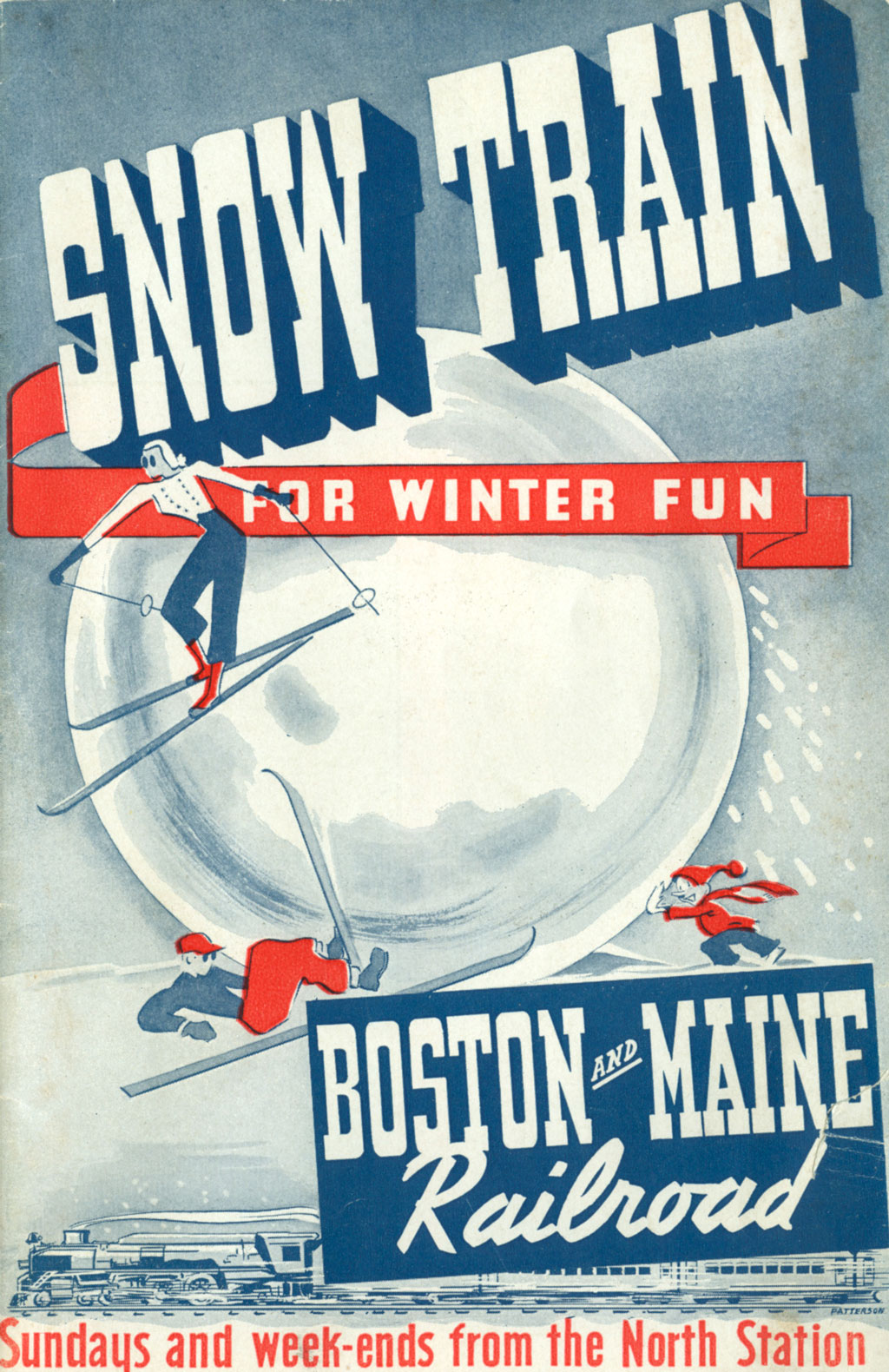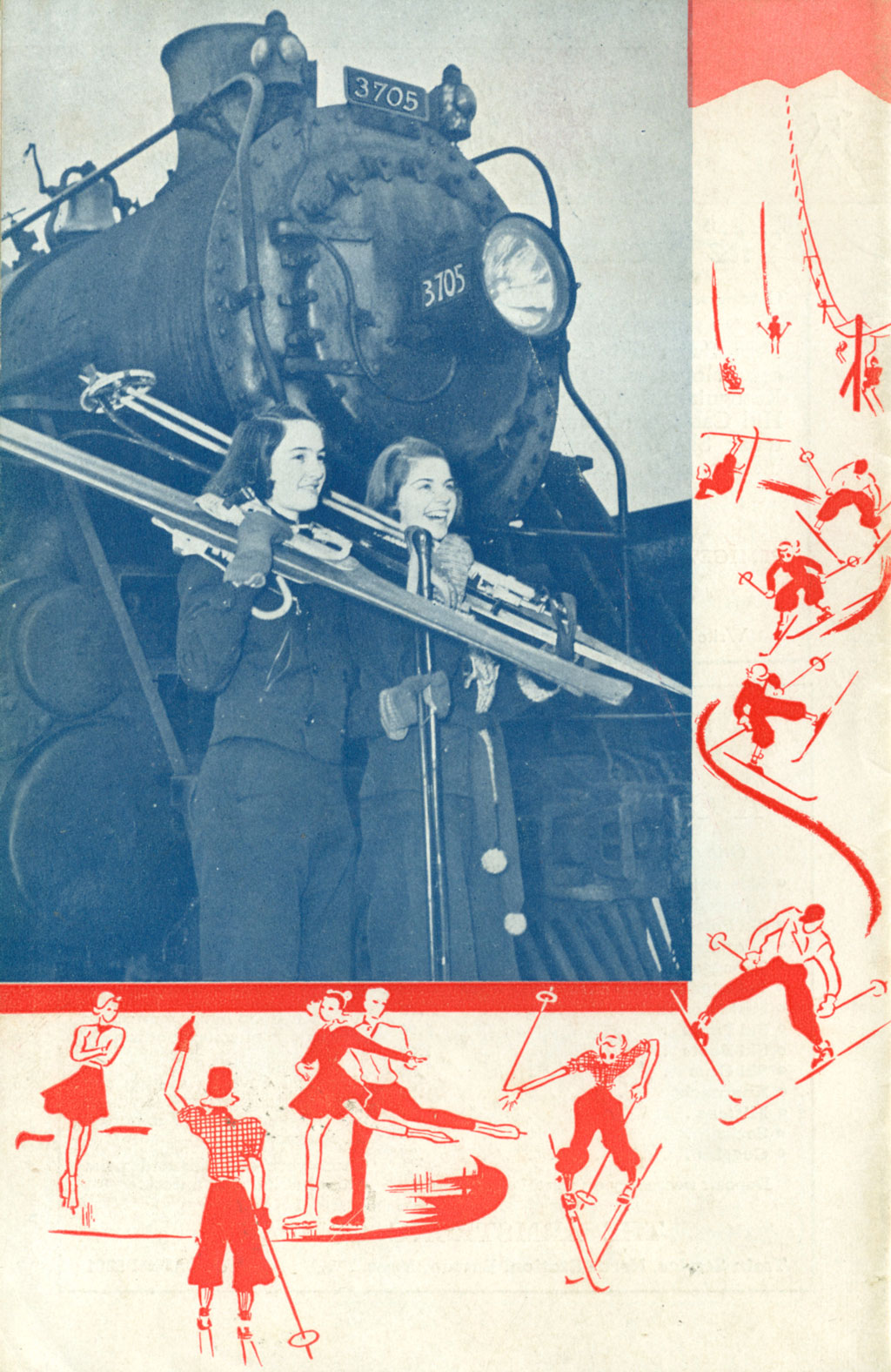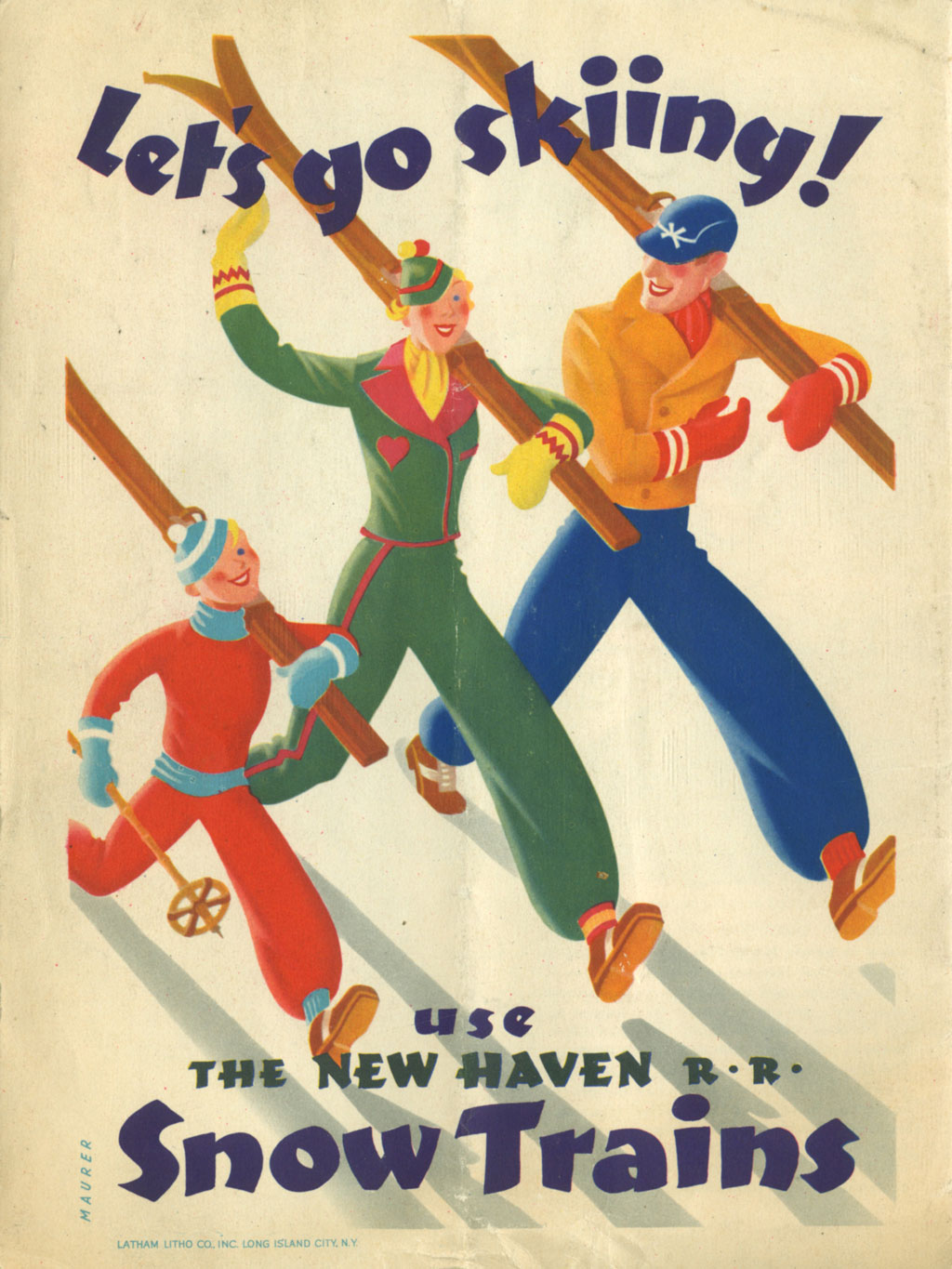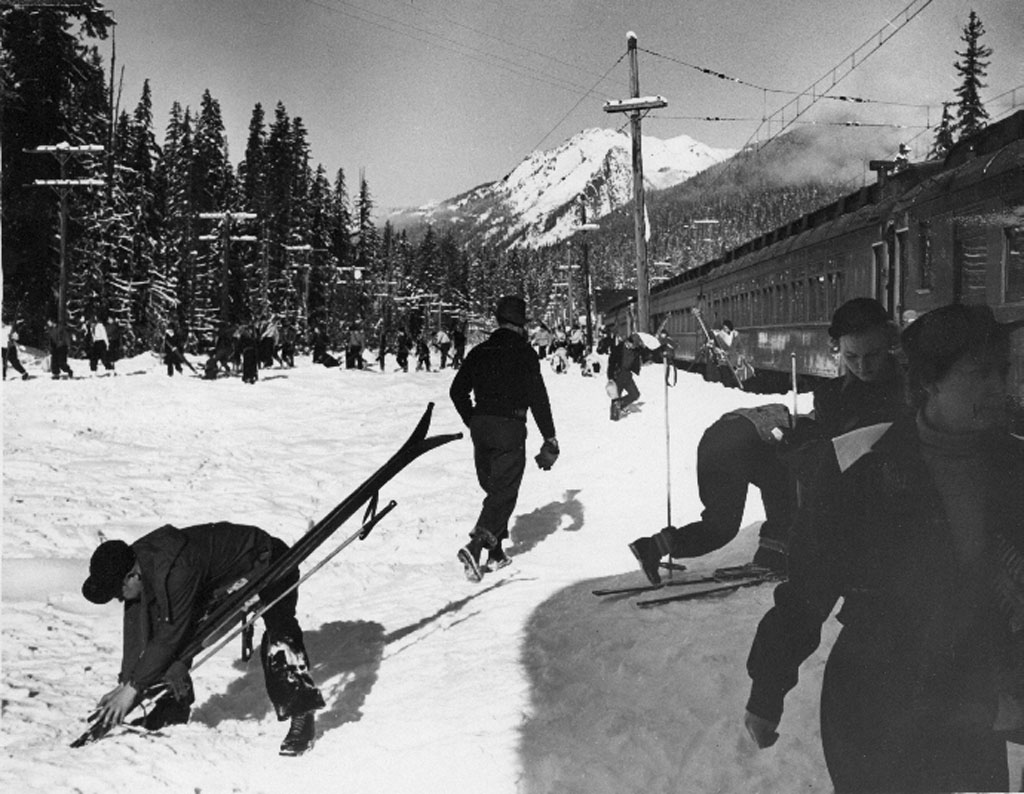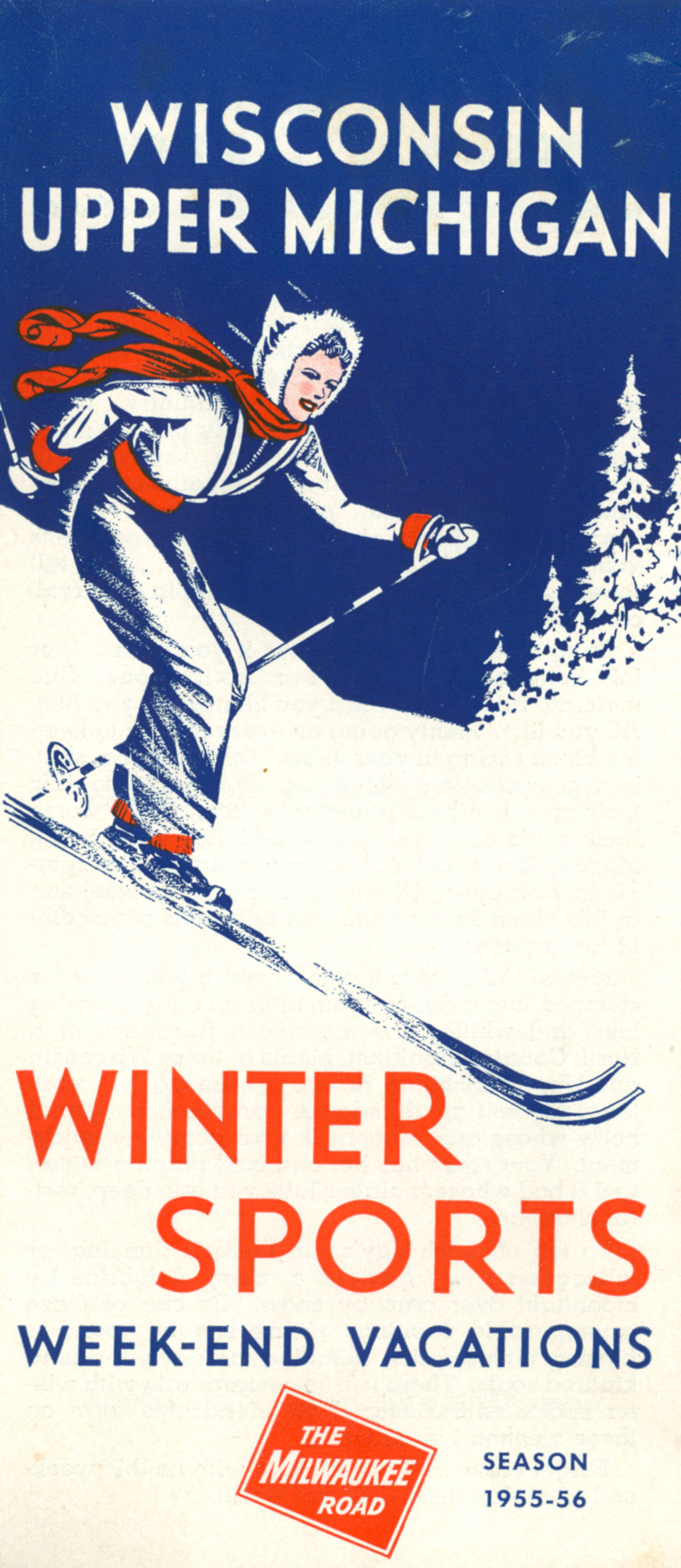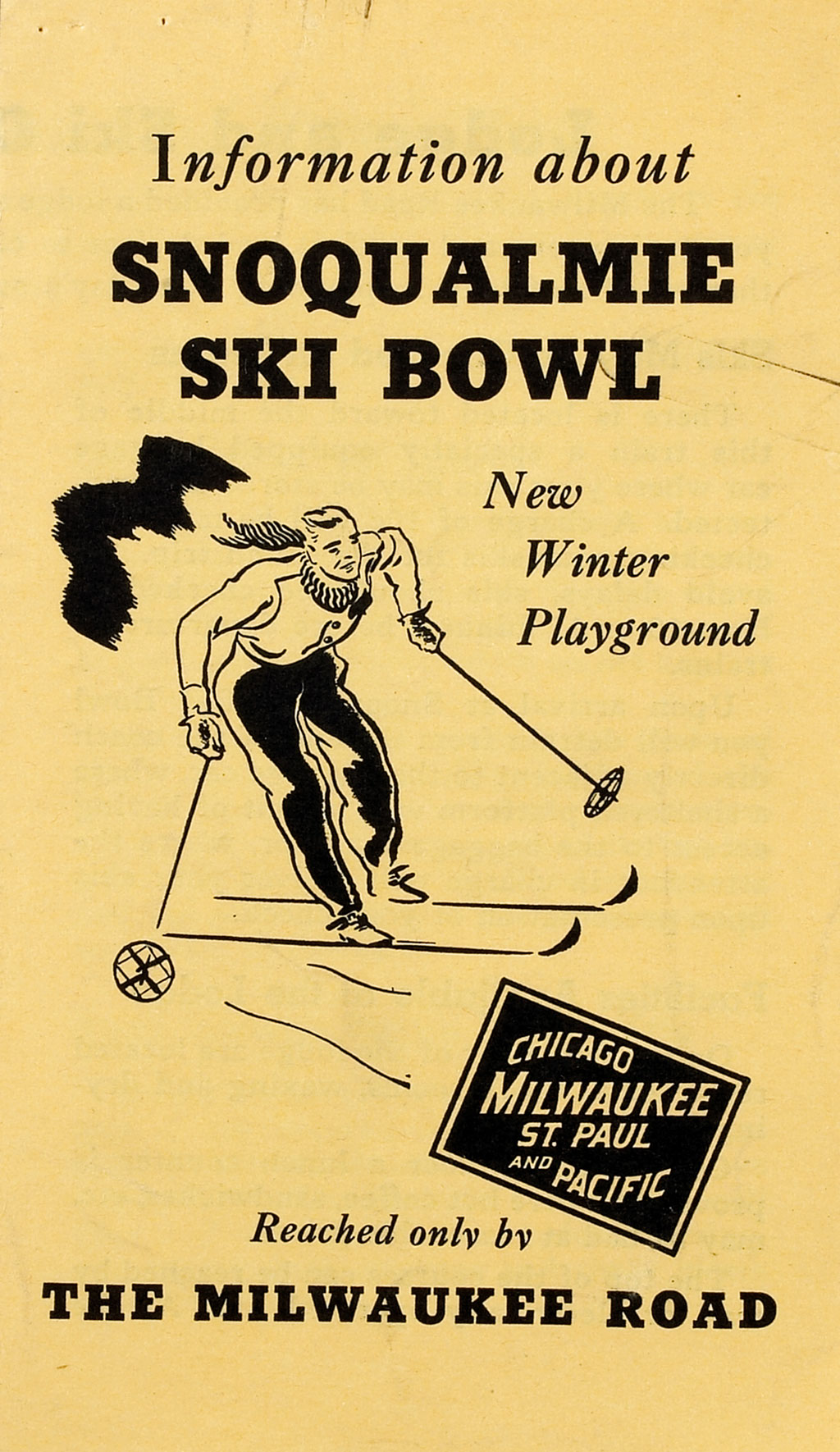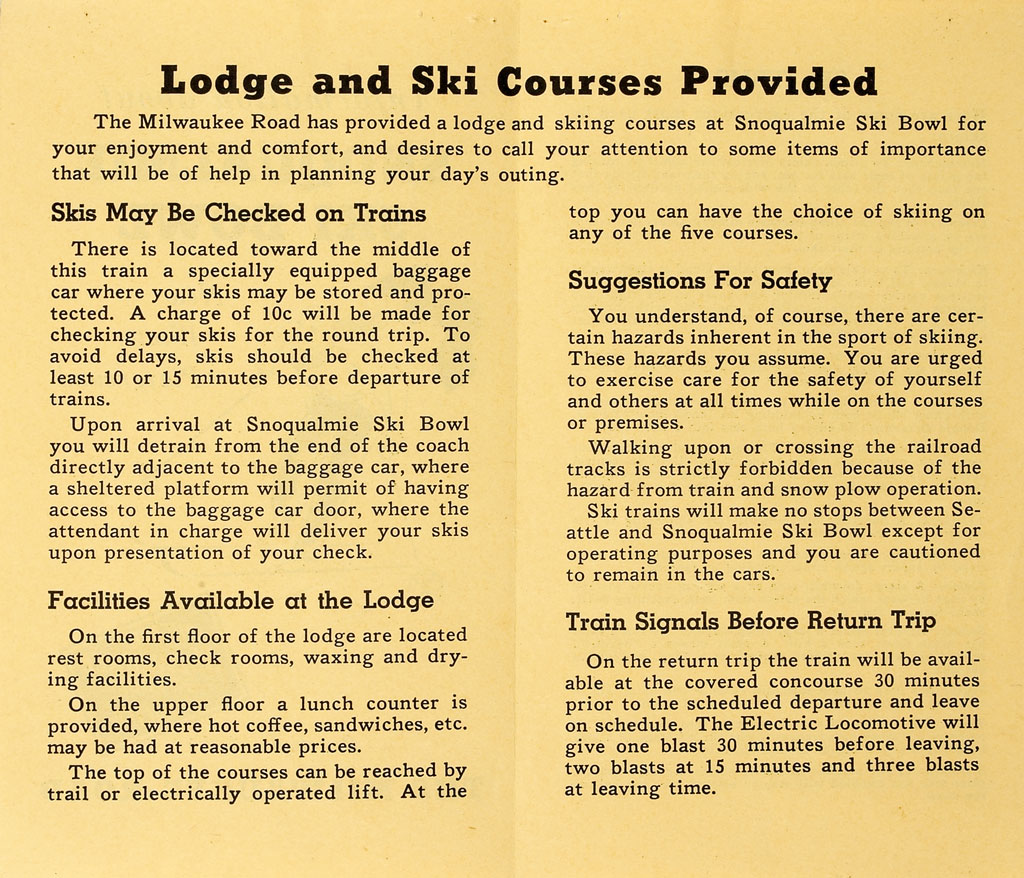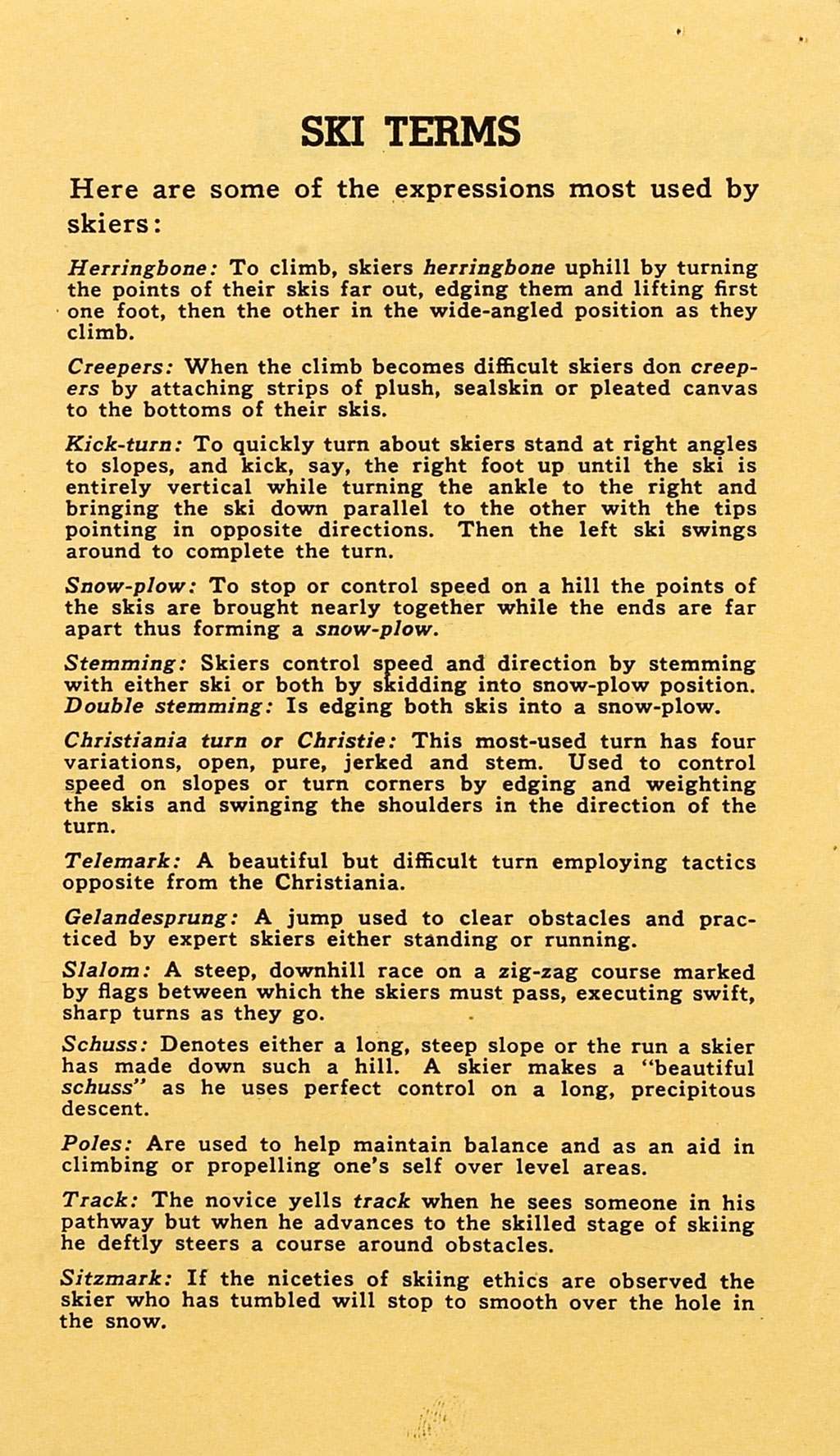Boston and Maine’s early and long-lived efforts are the best known among snow trains. B&M inaugurated its one-day excursions on January 11, 1931, carrying 196 people to Warner, New Hampshire, a ski resort. The railroad, in cooperation with the Appalachian Ski Club, took more than 8,000 passengers out of Boston in that first, 10-week season.
B&M also drew recognition for its promotional skills. As the season ended, Sales Management magazine reported, “It is an amazing example of alert merchandising; as a result, winter sports excursions into northern New England have become a New England institution.”
But there were earlier, less publicized trains as well, especially Southern Pacific’s Snowball Specials to Lake Tahoe in 1928 and semi-regularly to Donner Pass and Truckee, beginning in 1931; and some Canadian Pacific trains, beginning in 1928.
Colorado had the longest running snow trains. The era extended from 1936, when the Denver Post sponsored the first snow train to Hot Sulphur Springs for a ski tournament, to March 29, 2009, the last day of the Rio Grande Ski Train to Winter Park.
Even the Colorado narrow gauge lines got into the act. In 1938, Rio Grande operated trains from Salida and Gunnison to Marshall Pass. People skied on the west side of the pass, and the railroad made three trips back to the summit as a lift for skiers. The San Juan, the Alamosa-Durango train, occasionally dropped a coach at Los Pinos for cross-country skiers.
“The [Winter Park] ski train kept untold amounts of vehicles off Highway 40 over Berthoud Pass for all its years, preventing fender benders and crashes on the iced or slick highway. There was not a more relaxing way to get to and from Winter Park, especially in its latter years with three refreshment lounge cars,” said Steve Patterson, co-author of “Rio Grande Ski Train” (1984, 1995).
The New Haven and New York Central introduced snow promotions to the New York metropolitan area in January 1935. The Lackawanna and Erie followed in February. Traffic continued to grow in 1936. Lehigh Valley started service in January with trains to Hazleton, Pa., where a new winter sports center was being developed. Maine Central, Delaware & Hudson, Reading, and Pennsylvania railroads joined the snow train parade. Baltimore & Ohio collected $3,475 in passenger revenues from four trains out of Buffalo and Pittsburgh. The Central Vermont said the 1936-37 winter sports business was worth $80,000 to residents and businesses of Vermont’s Stowe district; of the total, the CV received $10,000. The New York, Ontario & Western started service in January 1938 to Roscoe, N.Y., in the Catskills.
The Chicago & North Western started in December 1933 with a “Winter Sports Special” to Eagle River, Wis. It was not until February 1936 that the Pennsylvania and New York Central operated winter sports excursions from Chicago to Petoskey, Mich.
Union Pacific planned a new ski resort at Sun Valley, Idaho, modeled after resorts in the Swiss and Austrian Alps. UP invented the ski lift for Sun Valley. Socialites from the East and celebrities from Hollywood attended the grand opening Dec. 21, 1936. In December 1937, UP arranged another publicity splash: its new streamliner, the City of Los Angeles, made its maiden run from New York to Sun Valley.
The Milwaukee Road built the Snoqualmie Ski Bowl at the crest of the Cascade Range, 61 miles east of Seattle “for fun and not for luxury,” opening it in January 1938. A typical train had 10 coaches, a baggage car, and a recreation car with a Wurlitzer “nickelodeon going full blast.” The bowl operated until 1949 when fire destroyed the lodge.
World War II occasioned suspension of snow trains. After the war, the New Haven operated the first train from Grand Central on Jan. 27, 1946. Most roads continued the pre-war tradition. Union Pacific reopened Sun Valley but sold it in 1964.
A few trains continue. For example, Mid-Continent Railway Historical Society in North Freedom, Wis., has presented its annual snow train in February since 1976. Saratoga and North Creek Rail Road in New York State will run a snow train Fridays, Saturdays, and Sundays from December 30 to March 31. Nordic Ski Association of Anchorage sponsors an annual train on the Alaska Railroad to the ski hill at Curry. Massachusetts Bay Railroad Enthusiasts charters a Conway Scenic train for Steam in the Snow.
The snow train tradition show the importance of the railroad in the growth of the winter sports industry, and its relationship to the everyday activities of people all across the country.
JOHN GRUBER is a long-time Trains contributor, founder and president of the Center for Railroad Photography & Art, and editor of Railroad Heritage. He has been a freelance railroad photographer since 1960, and received awards from the Railway & Locomotive Historical Society in 1994 for lifetime achievement in photography and in 2010 for an article about Lucius Beebe and Charles Clegg.





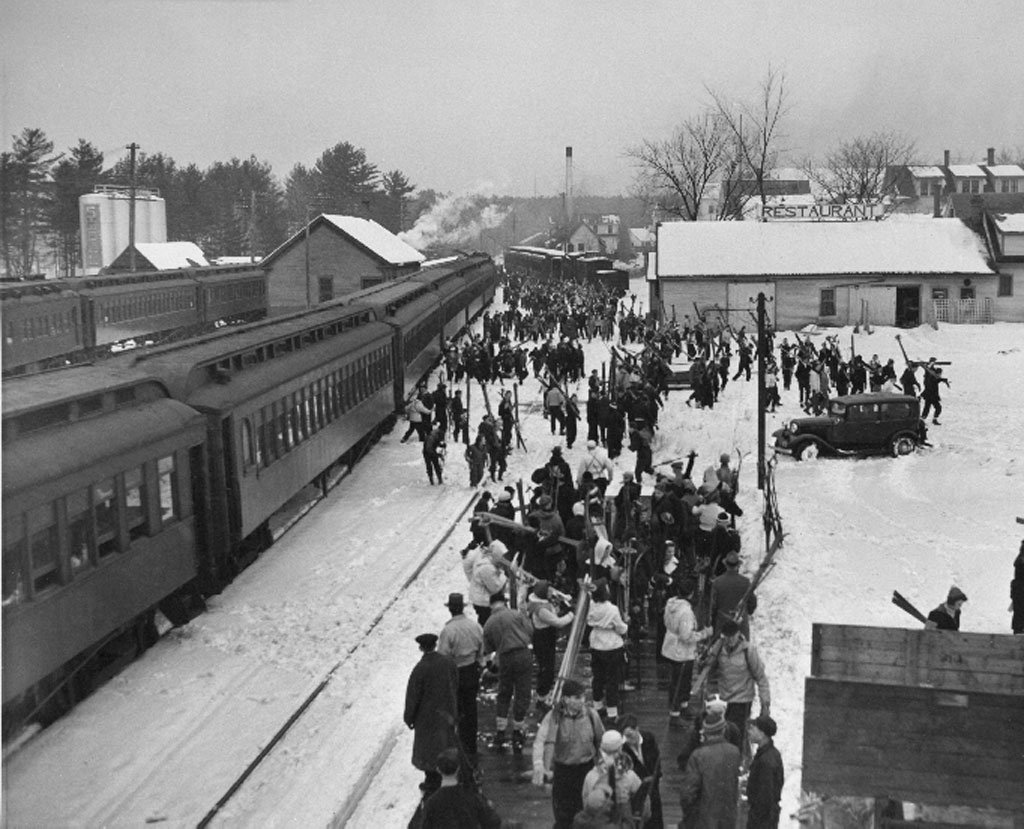


 FULL SCREEN
FULL SCREEN